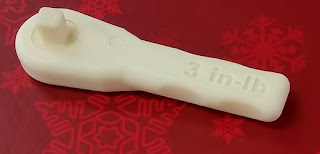The answer is so simple that it’s hardly believable: beans.
And the question is – how to lose weight and live a longer,
healthier life.
In a recent TED Talk and Wall Street Journal article, explorer
and educator Dan Buettner describes what he calls “blue zones,” areas with
unusual concentrations of centenarians. Buettner identified and studied seven such
regions having an unusually high number of persons 100 years or older: Sardinia,
Italy; Okinawa, Japan; Monterrey, Nuevo Leon, and Loma Linda, California.
Working with demographers and physicians, Buettner uncovered
the common threads that these healthy oldsters share. Here is one of his major
findings: “Their diet consists mainly of vegetables, fruits, whole grains,
beans and other carbohydrates. They eat meat but only small amounts, about five
times a month, usually on celebratory occasions. The cornerstone of every
longevity diet in the world was the humble bean.”
The theory is that the complex carbohydrates and high fiber
afforded by this diet in general, and beans in particular, are kind to our
microbiota, the teeming trillions of bacteria in our guts. They, in turn, are
kind to us, helping us to digest and glean energy from our food. Further
benefits of healthy gut flora include increased metabolic function, prevention
of allergies, and boosting the immune system. These little guys are busy,
indeed.
A high fiber diet, in addition to longevity, is also correlated
with weight loss. In a recent study published in the Annals of Internal
Medicine, researchers performed a dietary study of 240 adults in Worcester, MA.
Their goal was to compare the efficacy of a simple, high fiber diet to the more
complex, multicomponent American Heart Association (AHA) diet.
What they found was that by following one simple rule, that
is, to consume a diet high in fiber, those subjects lost nearly as much weight
as the ones on the much more complex AHA diet.
The value of this may not be immediately obvious. But take a
look at just a small excerpt from the thousands of words describing the AHA
diet:
“Consume a variety of fruits and vegetables; choose 5 or
more servings per day. Limit intake of foods with high content of cholesterol-raising
fatty acids. Match intake of total energy (calories) to overall energy needs. Limit
salt (sodium chloride) intake.”
This, compared to only one rule: eat a high fiber diet.
Those following this simple diet gained nearly all the benefit of those
following the AHA diet. (Remember, this was for weight loss).
But how to choose a high-fiber diet when our supermarkets
are full of sub-optimal stuff?
Harvard Health has the answer. In a 2013 study published in
Public Health Nutrition, Harvard Health researchers developed a simple method
to allow shoppers to choose healthy, whole-grain, high fiber products. They
call it the 10-in-1 rule.
The simplicity is alluring. When shopping for bread,
breakfast bars, pasta, chips, or any such related carbohydrates, pick the ones
with the lowest “total carbohydrates to dietary fiber” ratio, no more than ten to
one. Compare the nutrition labels on various offerings, and choose those where
dietary fiber is at least 10% (more is better) of total carbohydrates.
Refer to the nearby depiction of a nutrition label. Note that
total carbohydrates per serving is 28 grams, while dietary fiber is 9 grams.
The dietary fiber is far more than 10% of the total carbohydrates (2.8g). This
is indeed a high fiber choice.
What you will find is that that simple guideline will
automatically steer you away from foods which are high in simple carbohydrates,
sugars, and trans fats. A simpler shopping guide could not be found.
But you may find that some old favorites do not measure up.
You may need to switch to whole-wheat pasta to get healthy spaghetti. Or that
the white flour tortillas at the local grocer aren’t nearly as healthy as the
whole-wheat variety from another supermarket. Or that you may need to change
your brand of bread, because a much healthier option has been found. All this
based on a simple ratio, no calculator required.
A rather whirlwind tour, but remember these points:
· A high fiber diet (especially one rich in beans) is correlated with longevity
· A high fiber diet is a simple way to lose weight
· A high fiber diet is simple to shop for using the 10-in-1 rule
In the end, you must eat the foods that please you. But
perhaps this will give you pause, and readiness, to try other options. Your
microbiota will thank you. And their applause is thunderous.



